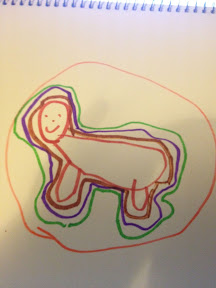- Hardcover: 320 pages
- Publisher: St. Martin’s Press (August 21, 2012)
- ISBN-10: 125000621
- Source: Publisher
Budo is the best friend of eight year old Max Delaney. A loyal friend, Budo is by Max’s side whenever he needs him. What sets Budo apart from a child’s typical friend is that he is imaginary, visible only to Max and other imaginary friends.
“…we are a different kind of real. It’s a kind of real that adults don’t understand, so they just assume we’re imaginary.”
Max, too, is different. He doesn’t like to be touched, even by his loving parents. Normal social situations are awkward for Max, causing him to “get stuck,” Budo the only individual that can calm him. Some doctors say he as Aspergers, others say he’s “on the spectrum.” None of this matters to Budo, for Max is quite literally his sole purpose for existing. Budo protects Max from the school bully, comforts him when he gets “stuck,” scopes out the bathroom before Max enters.
While Max still attends a public school, due to his challenges he seeks assistance from a special learning center housed in his school. Budo joins him every day for his special sessions with Mrs. Patterson, the teacher who works with Max on a daily basis. It’s Mrs. Patterson’s job to help Max, yet she takes this to a whole new level, abducting Max from the school. She doesn’t agree with how Max’s parents have been raising him and feels she is the only person qualified to care for him. It is up to Budo, and a host of other imaginary friends, to save Max and return him to the safety of his home.
Memoirs of an Imaginary Friend is told from the viewpoint of Budo, a truly remarkable imaginary friend. At over five years of age, Budo is ancient in the world of imaginary friends. Others like him comment on how realistic, how human he looks. Despite being a product of Max’s imagination, Budo is quite informed and intelligent. Since he is invisible to all adults he has the ability to see how they behave and interact, learning from their actions, picking up on the slightest differences and changes. Though, always on the back of his mind is the point in time which Max will no longer need him and he will cease to exist. He’s witnessed this happening to other imaginary friends; they start to fade and ultimately disappear. Unsure of what happens once an imaginary friend is no longer needed, Budo is terrified of his fate.
All of this is forgotten when Max, his person, is abducted. He must overcome the challenges that come with being an invisible and imaginary friend to find and help rescue Max, despite the end results. He must prioritize the happiness of Max above his own wants and desires.
Reading the premise, one might think this is a silly, whimsical sort of novel. It is far, far more than that. Full of emotion and depth, this novel captured my heart instantly. There are quite a few bits of silliness (including an entire chapter revolving around poop) but the periods of overwhelming love and friendship are in the majority. Additionally, there are several suspense filled chapters, all in all forming a incredibly well-crafted novel. This novel, at just over 300 pages, tackles a number of incredibly “big” topics above that of Asperger’s, including the power of imagination, love, trust, friendship and more. Also paramount is the topic of letting go; not only does Budo have to learn to “let go” of Max when the time comes but Max’s parents, especially his father, have to “let go” and allow themselves to accept the uniqueness of their son.
Bottom line: Dicks has created a truly unique and rewarding novel in Memoirs of an Imaginary Friend. I have formed a bond with Budo and with Max, a seemingly unrealistic relationship considering they are fictional characters. Don’t scoff…but read the book and you’ll understand. This book is destined to top my favorites of 2012 list. My attempt to express my love for this novel in words can never truly capture just how much I adored this novel. Highly, highly recommended.
Thanks to the lovely people over at Macmillan audio, sample the audio book of this truly phenomenal novel.
Side note: I received a galley for review, which has a different cover than the one pictured above. I won’t get started on my preference, but when my oldest son saw it, he was inspired to draw his own picture of his “imaginary friend.” I couldn’t resist sharing it…








Pingback: Three unique book reviews | Matthew Dicks
Pingback: What It Means to Be Real: Memoirs of an Imaginary Friend by Matthew Dicks « Bay State Reader's Advisory: Suggestions from a Massachusetts Librarian